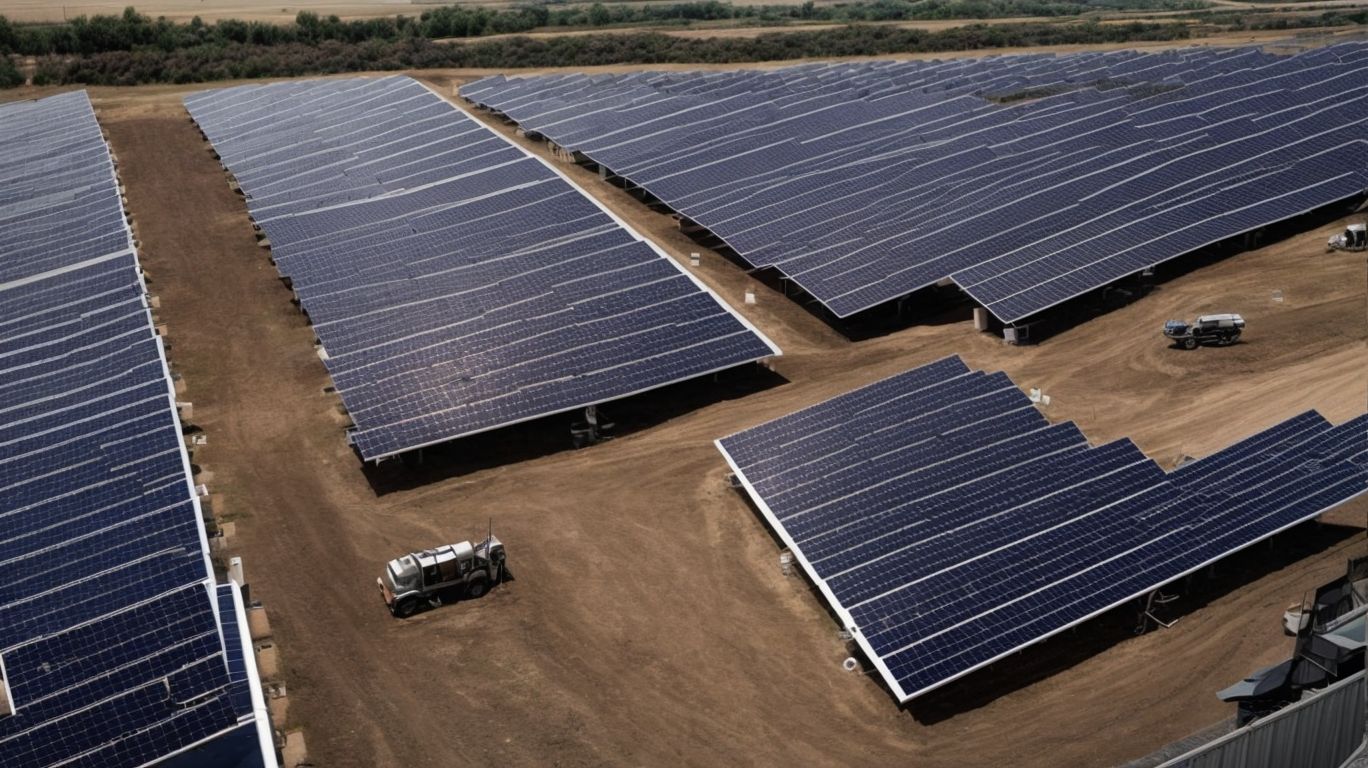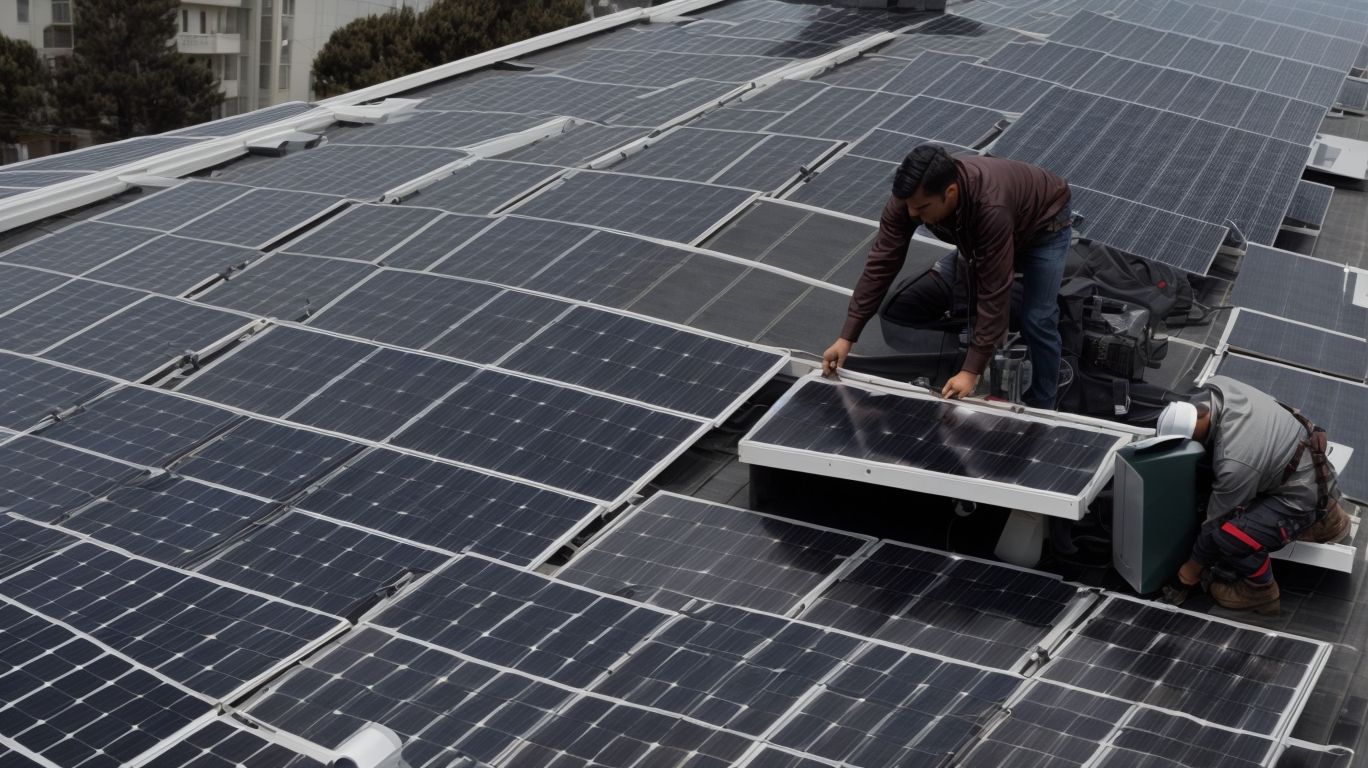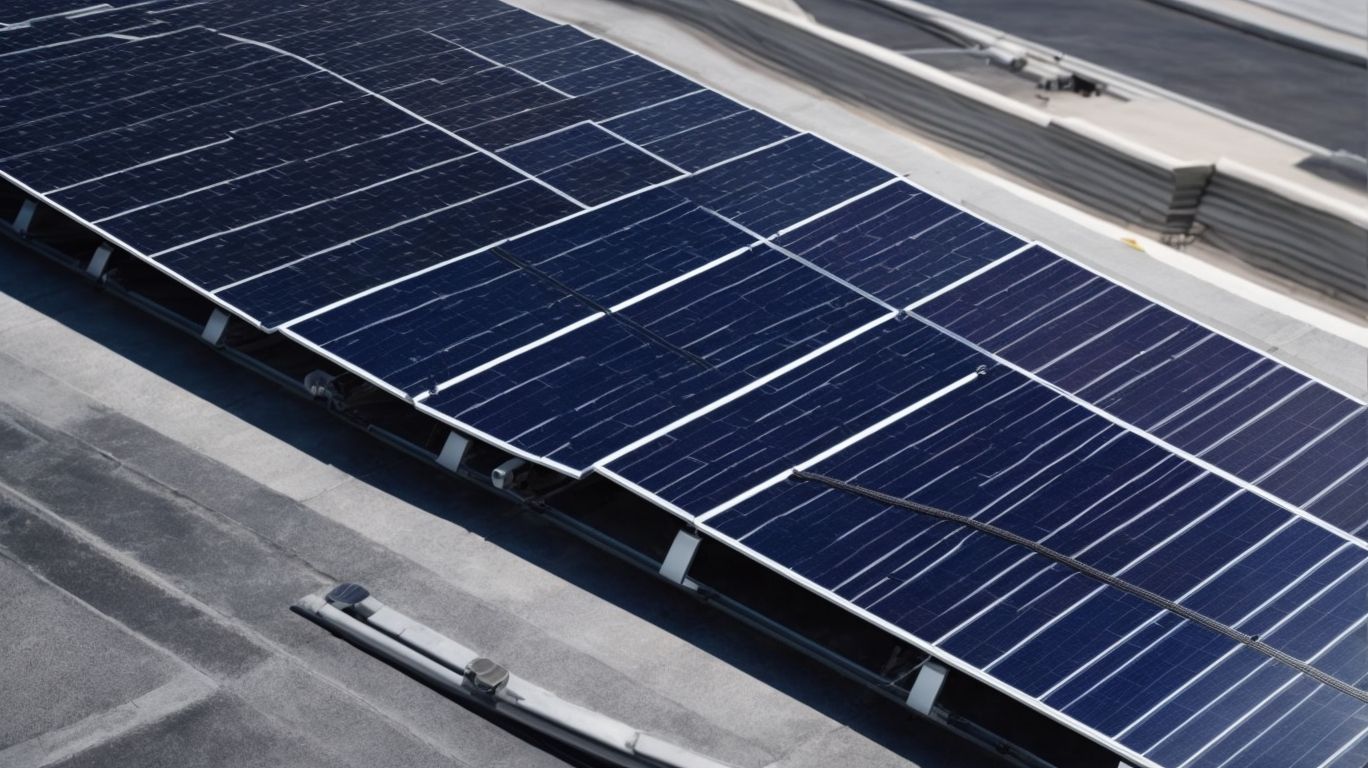
Investing in Single-Axis vs. Dual-Axis Solar Panel Tracking
Considering investing in solar panel tracking but unsure whether to choose single-axis or dual-axis technology?
We explore the differences between the two types of tracking systems, including their movement, efficiency, and cost. We also discuss the best option for residential, commercial, and utility-scale projects.
Learn about the benefits of single-axis tracking, such as cost savings and improved energy production, as well as the advantages of dual-axis tracking, including maximum energy production and flexibility in installation.
By the end, you’ll have a better understanding of which type of solar panel tracking is right for you.
What Is Solar Panel Tracking?
Solar Panel Tracking refers to the technology used to orient solar panels to maximize sunlight capture and energy output.
This technology plays a crucial role in optimizing energy generation by allowing solar panels to adjust their position throughout the day to directly face the sun, thus increasing their efficiency in capturing sunlight.
By tracking the sun’s movement, solar panels can operate at an optimal angle to receive maximum sunlight exposure, resulting in higher electricity production. Solar panel tracking enhances the overall performance of solar energy systems, making them more productive and cost-effective in harnessing renewable energy from the sun.
What Are Single-Axis and Dual-Axis Solar Panel Tracking?
Single-Axis and Dual-Axis Solar Panel Tracking are two common technologies used to adjust solar panel orientation for optimal sunlight exposure.
- Single-Axis Solar Panel Tracking aligns panels along one axis, typically rotating on an east-west axis to follow the sun’s path throughout the day. This technology allows for movement in a single direction, optimizing exposure to sunlight during specific times.
- On the other hand, Dual-Axis Solar Panel Tracking involves panels adjusting along two axes, both horizontal and vertical, allowing for precise positioning to capture maximum sunlight at all times. By continuously adjusting the orientation, dual-axis tracking technology ensures that solar panels are always facing the sun directly, increasing overall energy production efficiency.
What Are the Differences Between Single-Axis and Dual-Axis Tracking?
Single-Axis and Dual-Axis Tracking systems differ in movement, energy production efficiency, and maintenance requirements, each offering unique advantages and disadvantages.
- In a comparison between Single-Axis and Dual-Axis Tracking, Single-Axis systems tilt along a single axis, typically moving in an east-west direction to follow the sun’s path throughout the day.
- On the other hand, Dual-Axis systems can move on two axes, mimicking both the daily east-west movement and the seasonal angle changes of the sun. This dual movement capability allows Dual-Axis systems to capture more sunlight at various times of the day, resulting in higher energy production efficiency. This added complexity in movement also leads to increased maintenance requirements compared to Single-Axis systems.
Movement and Orientation
The movement and orientation of solar panels in tracking systems are crucial for maintaining an optimal path to capture sunlight efficiently based on the angle of incidence.
Panel movement plays a significant role in ensuring that the panels are able to continually face the sun throughout the day, maximizing the amount of sunlight absorbed. Proper positioning of the panels is essential to avoid shading from nearby objects and ensure an unobstructed path for sunlight exposure.
The angle of incidence, which refers to the angle at which sunlight strikes the panels, directly impacts the efficiency of energy conversion. By adjusting the orientation of the panels to align with the sun’s position, solar panels can capture sunlight more effectively and generate higher levels of electricity.
Efficiency and Energy Production
The efficiency and energy production of solar panel tracking systems are influenced by factors such as energy yield, power production, solar irradiance, and prevailing weather conditions.
Solar panel tracking systems are designed to optimize energy production by maximizing exposure to sunlight throughout the day. Higher energy yield can be achieved through these systems as they efficiently follow the sun’s path, capturing more sunlight. Power production is significantly impacted by the consistent tracking of the sun’s position, resulting in increased electricity generation. Solar irradiance plays a vital role in determining the amount of energy produced, with higher irradiance levels leading to greater output. Varying weather conditions can affect the performance of tracking systems, influencing energy production.
Cost and Maintenance
The cost and maintenance considerations of solar panel tracking systems play a significant role in determining their economic viability, tracking accuracy, and overall maintenance requirements.
One key aspect that influences the economic viability of solar panel tracking systems is the initial cost required for installation. While tracking systems generally have a higher upfront cost compared to fixed systems, their ability to increase energy production by maximizing sunlight exposure over the course of the day can lead to long-term financial benefits.
In terms of maintenance, tracking systems may require more frequent inspections to ensure proper functionality and alignment. Regular maintenance is essential to guarantee optimal tracking accuracy and performance, which ultimately affects the overall efficiency and output of the system.
Which Type of Solar Panel Tracking Is Best for You?
Choosing the best solar panel tracking system depends on factors like energy savings, installation requirements, and the specific application, comparing the available options.
Considering the energy savings aspect, it is crucial to assess the efficiency of the tracking system in maximizing sunlight exposure throughout the day.
Installation ease is another key consideration, with some systems being more straightforward to set up than others. When evaluating the suitability for the intended purpose, factors such as the geographic location and local climate should be taken into account to ensure optimal performance.
Conducting a thorough comparison of different systems’ features and installation processes can help in making an informed decision that aligns with your specific needs.
Considerations for Residential Use
When considering solar panel tracking for residential use, focus on enhancing energy efficiency, promoting sustainability, and tailoring the system to meet household energy needs.
Implementing solar panel tracking systems in residential settings can significantly boost the overall energy production of the household. By utilizing tracking technology, homeowners can capitalize on maximizing solar panel output, ensuring that energy is harnessed most effectively throughout the day. This improved efficiency not only reduces energy bills but also contributes to a more sustainable lifestyle by relying on clean, renewable energy sources. Customizing these systems allows homeowners to match their energy demands, providing a tailored solution that meets specific household requirements.
Considerations for Commercial Use
In commercial settings, solar panel tracking solutions should prioritize performance optimization and increased power generation capacity to meet higher energy demands efficiently.
By implementing solar panel tracking systems, businesses can effectively enhance the overall performance of their solar array setups. These tracking solutions enable panels to accurately follow the sun’s path throughout the day, maximizing sunlight exposure and boosting power generation. This, in turn, boosts the overall efficiency of the solar panels, ensuring that they operate at their peak capacity. With such enhanced performance and power generation capabilities, commercial establishments can effectively meet their elevated energy requirements and reduce their dependence on traditional energy sources.
Considerations for Utility-Scale Projects
For utility-scale projects, the focus should be on maximizing energy output, optimizing power production, and ensuring the effective utilization of solar panel tracking technology for large-scale energy generation.
- By implementing advanced tracking systems, such as single-axis or dual-axis trackers, solar panels can efficiently follow the sun’s path throughout the day. This dynamic movement allows for increased sunlight capture, resulting in higher energy output.
- Proper maintenance and cleaning schedules are crucial for ensuring optimal performance of the solar panels, thus maximizing power production. Integrating energy storage solutions can also enhance the efficiency of utility-scale solar projects, enabling the storage of excess energy generated during peak sunlight hours for later use when sunlight is limited.
What Are the Benefits of Single-Axis Tracking?
Single-Axis Tracking offers advantages such as cost savings, enhanced performance, and efficient sunlight capture, making it a compelling choice for certain applications.
By utilizing single-axis tracking technology, users can optimize their solar energy systems to follow the sun’s path throughout the day, leading to increased energy production. This improved performance translates into higher energy output, which directly contributes to cost savings over time. The efficient capture of sunlight by adjusting the angle of solar panels ensures maximum energy generation, making single-axis tracking a practical investment for those seeking to enhance their renewable energy production while minimizing operational expenses.
Cost Savings
The cost savings associated with Single-Axis Tracking systems can result in improved return on investment and enhanced solar panel economics, making it a financially viable choice for many users.
By utilizing Single-Axis Tracking technology, users can achieve higher energy production levels compared to fixed-tilt systems. This increased energy generation translates into greater revenue generation from the solar panels, positively impacting the return on investment. The ability of Single-Axis Tracking to follow the sun’s path throughout the day maximizes the efficiency of solar panels, leading to improved performance and cost-effectiveness over the long term. These benefits contribute to the overall financial viability and attractiveness of implementing Single-Axis Tracking systems for solar energy projects.
Improved Energy Production
Single-Axis Tracking systems contribute to improved energy production by maximizing solar energy capture and enhancing power generation capabilities, resulting in higher energy yields.
This technology essentially involves solar panels being mounted on trackers that follow the sun’s path along a single axis, allowing for optimal exposure to sunlight throughout the day. By tracking the sun’s movement, Single-Axis Tracking systems can increase energy output by up to 25% compared to fixed solar panel installations. This means that more energy can be harnessed from the sun, translating into higher electricity generation and improved overall efficiency of solar energy systems.
Better Performance in Certain Climates
Single-Axis Tracking systems exhibit superior performance in specific climates by adjusting tilt angles to optimize sunlight exposure, maximizing energy output under varying weather conditions.
These tracking systems are particularly effective in regions with high levels of solar radiation, as they can adapt the tilt angle of the solar panels to capture more sunlight throughout the day. By constantly adjusting the tilt angle, Single-Axis Tracking systems can enhance energy production during different seasons, ensuring consistent performance even in areas prone to cloud cover or frequent changes in sunlight intensity. This flexibility in tilt adjustment allows for maximum utilization of available sunlight, making these systems ideal for locations with dynamic weather patterns.
What Are the Benefits of Dual-Axis Tracking?
Dual-Axis Tracking systems offer advantages such as maximum energy production, installation flexibility, and superior performance in variable sunlight conditions, making them ideal for specific scenarios.
By continuously adjusting the tilt and orientation of solar panels to follow the sun’s path, Dual-Axis Tracking facilitates capturing the maximum amount of sunlight throughout the day. This dynamic movement allows the panels to generate more electricity compared to fixed systems, resulting in increased energy output. The flexibility of these systems enables installation on various terrains and locations, granting users the freedom to optimize energy production at their preferred sites. This adaptability proves invaluable in achieving optimal performance in both sunny and partially shaded environments, ensuring consistent and efficient power generation.
Maximum Energy Production
Dual-Axis Tracking systems excel in achieving maximum energy production levels by optimizing solar irradiance exposure and enhancing power production efficiency, resulting in significant energy outputs.
These systems continually adjust the position of solar panels to directly face the sun, capturing more sunlight throughout the day. By tilting and rotating the panels along both the vertical and horizontal axes to track the sun’s movement, they can maintain an optimal angle for maximum solar irradiance absorption. This dynamic tracking capability allows the panels to convert a higher percentage of sunlight into electricity, boosting overall power production efficiency and ultimately generating more clean energy.
Flexibility in Installation
Dual-Axis Tracking systems offer installation flexibility by adjusting solar panel positions dynamically, accommodating varying installation requirements and site conditions effectively.
This dynamic adjustment capability enables the panels to be positioned optimally based on the changing angle of sunlight throughout the day, maximizing energy capture. The ability to track both the altitude and azimuth ensures that the panels are constantly oriented towards the sun, enhancing overall energy production.
This adaptability is particularly beneficial in locations with irregular terrain or challenging shading issues, where traditional fixed systems may be limited in their efficiency. By continuously optimizing the panel positions, Dual-Axis Tracking systems can significantly boost solar energy output and provide a more reliable source of renewable energy.
Better Performance in Variable Sunlight Conditions
Dual-Axis Tracking systems demonstrate superior performance in fluctuating sunlight conditions by actively tracking the sun’s position, adapting to changing weather parameters for optimized energy capture.
This active sun tracking mechanism allows the system to maximize energy production by continually adjusting the angle and orientation of the solar panels to directly face the sun throughout the day. By accurately predicting and responding to changes in weather conditions, such as cloud cover or shifting cloud patterns, Dual-Axis Tracking maintains efficiency even when sunlight intensity fluctuates. The ability to dynamically respond to varying environmental factors sets Dual-Axis Tracking apart, ensuring consistent and reliable energy generation regardless of external influences.




No Comments